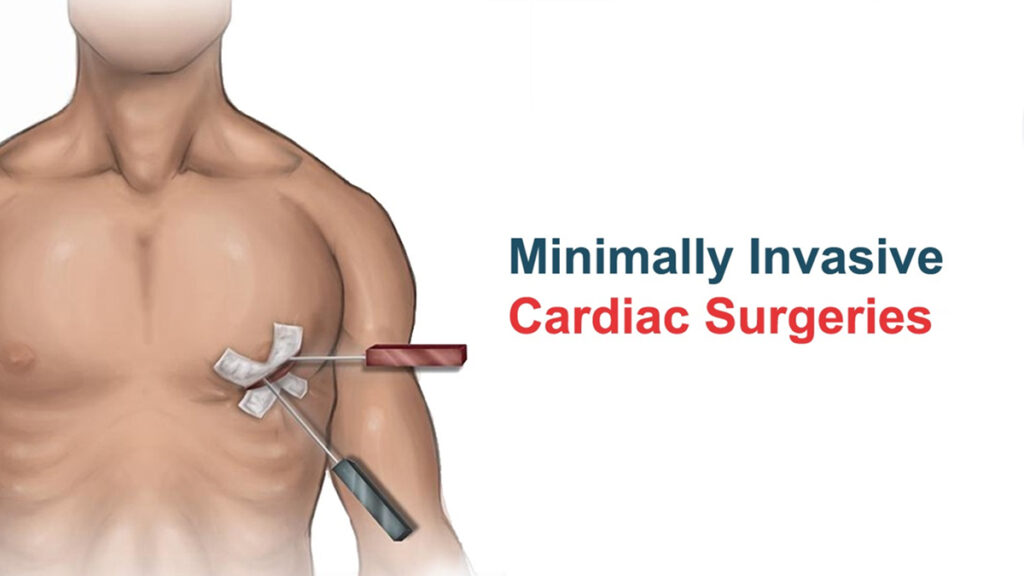In recent years, there has been a phase shift in the paradigm of cardiac surgical surgery towards a minimally invasive approach. The innovative techniques provide patients with such advantages as faster recovery, smaller incisions as well as a lower risk of complications. As a part of these developments, off-pump coronary artery bypass grafting (OFF-CAB) and transcatheter aortic valve implantation (TAVI) are considered to be the most important in terms of possible application areas.
This extensive manual will go into every detail about minimally invasive cardiac surgery – its techniques, advantages, or indications and its estimation.
Overview:
Minimally invasive cardiac surgery entails carrying out surgeries on the heart through small incisions between the ribs without the need for large openings through the chest. The strategy makes use of highly specialised instruments and advanced imaging techniques that can enable doctors to access the heart with reduced trauma on surrounding tissues.
Techniques of Minimally Invasive Cardiac Surgery:
1. Robot-Assisted Surgery:
It happens by means of robotic arms controlled by a surgeon and is used to conduct highly accurate procedures. The method presents better dexterity and visualisation that make use of the high-resolution microscopic optics, allowing for precise movements within narrow spaces.
2. Endoscopic Surgery:
It employs small vital holes and a camera-containing endoscope for imaging and reaching the surgery site. This method permits surgeons to execute procedures with minimum tissue disruption and the ability to guide the instruments accurately.
3. Thoracoscopic Surgery:
It means having small incisions made between the ribs from the surface of the heart. The surgeons use sophisticated tools and a thoracoscope during procedures and can monitor the operation site on a video screen. This technique allows for a minimally invasive approach instead of a more invasive sternotomy.
Benefits of Minimally Invasive Cardiac Surgery:
- MICS is similar in levels of invasiveness to traditional open-heart surgery but with smaller incisions leading to less damage to surrounding tissues and more minor scars. Among the main advantages is that it provides faster recovery times and better cosmetic results for the patients.
- Typically, minimally invasive techniques lead to shorter overall hospital stay times and faster recovery periods than open-heart surgery. A Quick Recovery After The MICS Surgery Patients who went for MICS report less pain and discomfort after the procedure. They are able to resume their normal activities quickly afterward.
- MICS is a technique that is usually associated with lower rates of associated complications such as infections, bleeding, and wound complications. The reduced trauma to the tissues, as well as smaller incisions, lowers the amount of side effects.
Indications for Minimally Invasive Cardiac Surgery:
1. Coronary Artery Disease:
Non-surgical methods, like robotic-assisted CABG and transcatheter PCI, are utilised to treat coronary artery disease by re-opening the coronary arteries and thus restoring blood flow to the dying heart muscles.
2. Valve Disorders:
MICS techniques can be used in the repair or replacement of heart valves. Examples are mitral valve repair/replacement and aortic valve replacement. These strategies offer comparable results with traditional surgery; however, they come with fewer complications.
3. Atrial Fibrillation:
Small incisions or minimal access techniques such as thoracoscopic atrial fibrillation ablation are used to treat abnormal heart rhythms by creating scars that are used to block abnormal pathways that cause irregular heartbeat.
Future Prospects of Minimally Invasive Cardiac Surgery:
1. Advancements in Robotics:
The developments in the area of robotic technology will continue to increase the capability of minimally invasive cardiac surgery, even capable of complex procedures with better outcomes.
2. Integration of Imaging Modalities:
By incorporating current imaging methods, including 3D echocardiography and intraoperative imaging, surgeons will have the capability to observe the heart and complicated anatomical structures.
3. Patient-Centric Care:
Thereby, with a clear trend towards personalised medicine, the future of minimally invasive cardiac surgery will naturally concentrate on the adaptation of treatment strategies according to the specific needs of each patient, improving the results and patients’ satisfaction.
The Bottom Line!
Therefore, minimally invasive cardiac surgery is a new advancement in cardiac surgery, and patients get less invasive options than traditional open-heart surgeries. The MICS procedure, due to the many advantages offered, such as less trauma, faster recovery, and a lower risk of complications, is frequently embraced in the treatment of heart diseases of various kinds.
The future of minimally invasive cardiac surgery at the German Heart Center looks very promising as technology is being improved and surgical techniques are in progress. Minimally invasive cardiac surgery can continue to improve patients’ conditions and change the way cardiac care is done.

